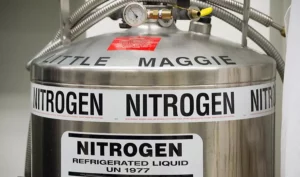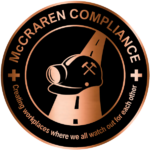Original article published by Safety+Health
Liquid nitrogen is the colorless, odorless, clear liquefied form of nitrogen.
In the retail food and food service industries, the U.S. Department of Agriculture says, liquid nitrogen has been used as a freezing agent in food preparation and preservation in the rapid freezing of foods (such as ice cream), to process dry herbs and spices, and to rapidly chill beverages.
However, it can be extremely dangerous to work around. “Anyone who handles it should be aware of its unique properties and hazards,” the Compressed Gas Association says.

Here are some tips for working with liquid nitrogen from CGA:
Wear proper personal protective equipment. This includes a faceshield, insulated gloves, eye protection, and protective clothing that covers your skin and doesn’t have cuffs or folds that can potentially trap spilled cryogenic liquid.
Never consume. It can freeze human tissue on contact because it’s -321° F. Swallowing it can result in serious injury or death.
Use only containers and equipment specifically developed for cryogenic liquids. “Materials that are not designed for cryogenic service, such as glass or plastic, can shatter when exposed to liquid nitrogen.” And make sure you’re pouring it slowly to minimize thermal shock and splashing.
Don’t trap in a container, tubing or piping. “As the liquid warms up and converts to gas, the pressure rises.” Containers not designed to adequately vent it can rupture.
Handle liquid nitrogen in well-ventilated areas. Because of its ability to turn into a gas, liquid nitrogen can “quickly displace the air in the room and create a risk of oxygen deficiency and asphyxiation.” CGA recommends air monitoring.
McCraren Compliance offers many opportunities in safety training to help circumvent accidents. Please take a moment to visit our calendar of classes to see what we can do to help your safety measures from training to consulting.
Original article published by Safety+Health


